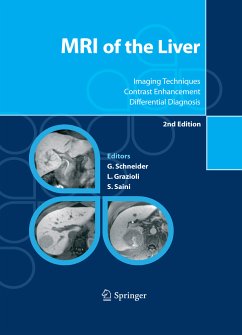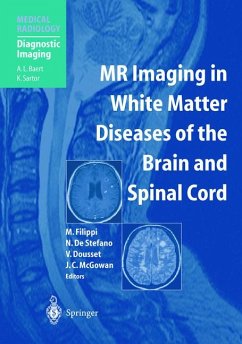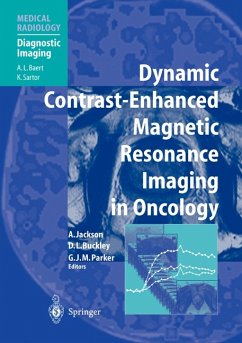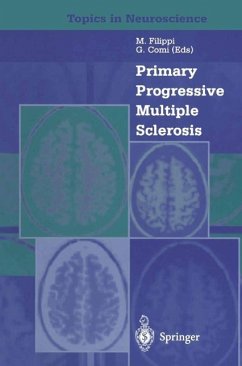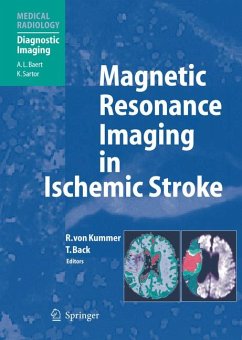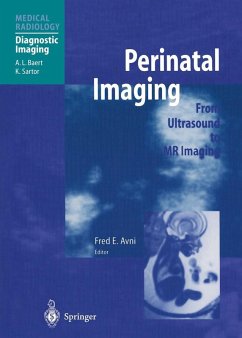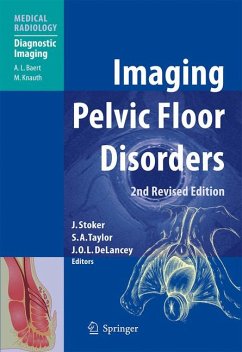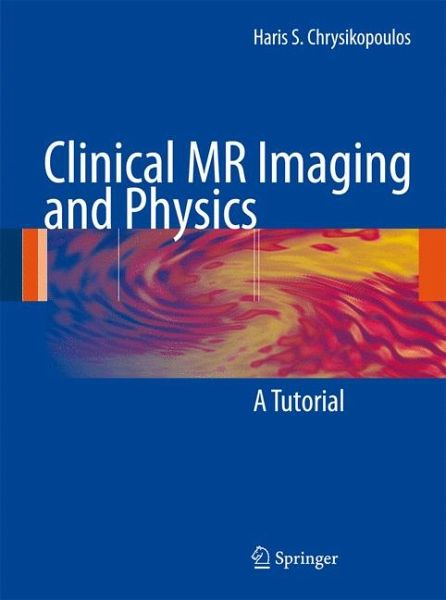
Clinical MR Imaging and Physics (eBook, PDF)
A Tutorial
Versandkostenfrei!
Sofort per Download lieferbar
40,95 €
inkl. MwSt.
Weitere Ausgaben:

PAYBACK Punkte
20 °P sammeln!
Keywords Spin > Electromagnetic radiation > Resonance > Nucleus > Hydrogen > Proton > Certain atomic nuclei possess inherent magnetic Let us summarize the MRI procedure. Te patient properties called spin, and can interact with electro- is placed in a magnetic feld and becomes temporarily 1 magnetic (EM) radiation through a process called magnetized. Resonance is achieved through the - resonance. When such nuclei absorb EM energy they plication of specifc pulses of EM radiation, which is proceed to an excited, unstable confguration. Upon absorbed by the patient. Subsequently, the excess - retur...
Keywords Spin > Electromagnetic radiation > Resonance > Nucleus > Hydrogen > Proton > Certain atomic nuclei possess inherent magnetic Let us summarize the MRI procedure. Te patient properties called spin, and can interact with electro- is placed in a magnetic feld and becomes temporarily 1 magnetic (EM) radiation through a process called magnetized. Resonance is achieved through the - resonance. When such nuclei absorb EM energy they plication of specifc pulses of EM radiation, which is proceed to an excited, unstable confguration. Upon absorbed by the patient. Subsequently, the excess - return to equilibrium, the excess energy is released, ergy is liberated and measured. Te captured signal producing the MR signal. Tese processes are not is processed by a computer and converted to a gray random, but obey predefned rules. scale (MR) image. Te simplest nucleus is that of hydrogen (H), con- Why do we need to place the patient in a m- sisting of only one particle, a proton. Because of its net? Because the earth's magnetic feld is too weak to abundance in humans and its strong MR signal, H be clinically useful; it varies from 0. 3-0. 7 Gauss (G). is the most useful nucleus for clinical MRI. Tus, foC r urrent clinical MR systems operate at low, mid or our purposes, MRI refers to MRI of hydrogen, and for h igh feld strength ranging from 0. 1 to 3.
Dieser Download kann aus rechtlichen Gründen nur mit Rechnungsadresse in A, B, BG, CY, CZ, D, DK, EW, E, FIN, F, GR, HR, H, IRL, I, LT, L, LR, M, NL, PL, P, R, S, SLO, SK ausgeliefert werden.





